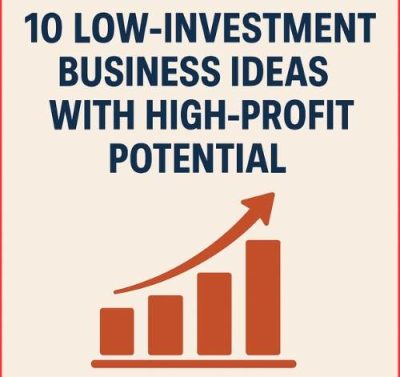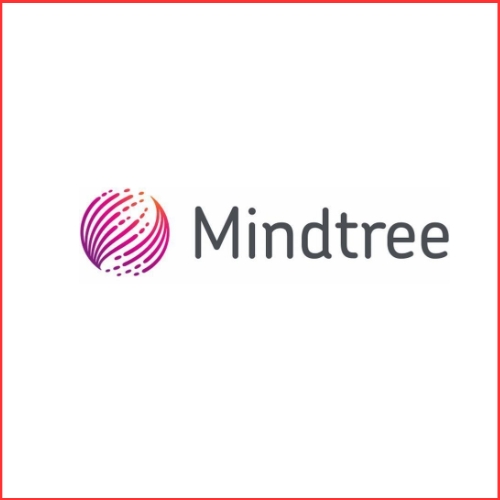Fintech improvements should be visible as troublesome developments, especially those which have the accompanying sources: robotized monetary administrations that change market liquidity and confidential business sectors that make options for customary supporting and exchanging (for instance: dull pools, exchanging stages, swarm subsidizing.
Fintech arrangements can empower banks to interface between existing siloed channels and give a consistent encounter across channels. Coordinating dissimilar channels and information sources empowers banking associations to acquire significant client experiences. This will assist them with handling the test of information-driven interruption.
Banking associations are no aliens to embracing innovation interruptions. With the sort of development the financial business has seen in the previous many years, it very well may be contended that it’s in a greatly improved position than most to make due and flourish in the computerized age. Nonetheless, certain cycles in the baking area are as yet done similarly as it was many years prior. Without embracing creative disturbances, associations could find it trying to prevail in dubious times.
Understanding the Need for DISRUPTIVE INNOVATION IN FINTECH
Poor Customer Service and Slow Response times
Customarily, client care groups in financial associations invest quite a bit of their energy and exertion rehashing similar data each time during call support, bringing about sluggish reaction times. Thus, associations can’t answer to new open doors and address other arising client issues. Sadly, just a modest bunch of associations are fruitful at managing clients better. With developing tension on associations to give the best degree of client support at the speed of business, Chatbots have arisen as a potential chance to change all the more rapidly.
Cut-throat Competition from Digital Players
Generally, banks have confronted little rivalry from arising players inside the business because of steadfast clients, guidelines, and capital necessities. Subsequently, they had critical circumspection in all that they do. Notwithstanding, likewise with different ventures, the pandemic has sped up the advanced change inside the financial business. With digitization came rivalry inside the financial area. With web expansion and democratization of monetary administrations, banks never again rival players inside the conventional financial industry yet rival fintech firms, virtual instalment associations, and distributed loaning and internet loaning stages.
Obsolete Business Management Applications
Many significant financial associations and monetary administrations have, throughout the long term, gained old business the board applications or siloed frameworks that don’t stay aware of the new business prerequisites and innovation necessities. Associations utilizing obsolete business the board applications or soiled frameworks are probably going to pass up useful learning experiences, particularly from advanced channels and computerized endeavours that create more income and worth. With regards to development in the financial area, the absence of a computerized approach is a hindrance to powerful advanced change.
Digital Banking Use Cases in the Banking Sector
Conversational AI stages Fintech offers Chatbots and virtual voice partners for further developing client care
Unfortunate client care and slow reaction time is the last thing any business would want. In any case, sadly, it is likewise a reality that client obtaining is costly. Additionally, no client might at any point want to account for themselves two times to client care leaders or stand in a line sitting tight for their chance in banks or stall out in banking applications and being not able to stop them.
With the advancement of chatbots, virtual voice colleagues, and conversational points of interaction. The present Conversational AI stage choices give a degree of client experience and consumer loyalty that would have been unbelievable a couple of years prior. With regards to giving a smoother banking experience, Chatbots replaces the requirement for gifted client care experts to be available every minute of every day for routine financial exchanges. That is correct they have every minute of every day backing to help essential record activities, including account balance, getting articulations, moving reserves, covering service bills, credit-related inquiries, and protection related processes.
Maintaining a Competitive Edge with Customer Data Analytics
As banks in the monetary business keep on confronting difficulties in future-sealing their organizations, banking foundations are investigating fintech as an amazing chance to computerize direction and further develop organization productivity. Banking associations need quicker experiences to distinguish market patterns and gain an edge over contenders. In this way, they influence client information examination to acquire a 360-degree perspective on the client excursion to modify their monetary items and administrations. Additionally: innovation will convey quicker bits of knowledge for banks to address client problem areas at different touchpoints. This will bring about binding together completely incoherent frameworks for an improved client experience. Therefore, banking clients can accomplish this quicker than expected.
Omnichannel Digital Banking
Banks can develop to move carefully forward and profit by the maximum capacity of Omnichannel advanced banking. As per the new Gartner CIO Survey, CIOs accept that a more noteworthy piece of the business will come through computerized connections, and more organizations are chasing after advanced channels to present advanced items quicker. Banking establishments should be lithe even with change. Fintech arrangements can empower banks to interface between existing siloed channels and give a consistent encounter across channels. Coordinating dissimilar channels and information sources empowers banking associations to acquire significant client experiences. This will assist them with handling the test of information-driven disturbance. Banking associations acknowledge how the speed and force of examination are assisting them with beating quite possibly the main boundary to omnichannel advanced financial reception.
Disruptive Innovation in FinTech
How could occupants, new businesses, and VCs contemplate FinTech, disturbance, and blockchains?
Over Chinese New Year I read about Professor Clayton Christensen’s entrancing model for recognizing and managing troublesome development, and endeavour to sum up it here.
Here we gain proficiency with the distinctions and elements between problematic advancement, supporting development, and product development. Every one of them collaborates with the others, and the suitable methodologies and guard systems vary. I then, at that point, give my contemplations on how this system connects with FinTech for occupants, new businesses, and financial speculators.
What is Disruptive Innovation?
Begat to Professor Clayton Christensen of Harvard Business School in his book “The Innovator’s Dilemma”, troublesome development utilizes innovation and plans of action to serve new or low-end clients with the second rate or less difficult items at a lower price tag.
Troublesome advancements grow showcases and are particular from supporting developments (improving items) and productivity advancements (bringing down cost and making similar items less expensive), which will quite often serve similar business sectors better.
Occupants become upset when they centre around their better quality more productive clients while their lower-end is surrendered to different organizations. This is a reasonable and smart administration choice looking for the productivity measurements that the financial exchanges request.
Fruitful disruptors then climb the worth bend by keeping up with early benefits (eg lower expenses) and making steady enhancements to the item and begin taking centre clients from officeholders.
Four Points about Disruptive Innovation
1. Disturbance is a cycle that beginnings on the periphery and closures in the standard (eg early PCs). Interruption takes time, so frequently occupants neglect disruptors until it is past the point of no return (eg Netflix versus Blockbuster)
2. Disruptors construct altogether different plans of action that occasionally occupants don’t have the foggiest idea, or think will not matter to their centre business or markets – until the disruptor moves upstream. On the off chance that a typical refrain is “They’re not exactly a danger, they’re going for the low-end.”, then, at that point, this is a banner for a disruptor.
3. Effective organizations or items don’t be guaranteed to mean the advancement is troublesome: There are various ways and systems for progress. For instance, Uber and iPhones both have victories due to being stages, yet Uber’s emphasis has been on making a preferable item over taxis (supporting development), and Apple’s attention has been on its engineer biological system.
4. “Disturb or be upset” is excessively loquacious: a superior reaction for officeholders is to reinforce associations with centre clients through supporting developments or make a different business to serve low-end clients with a low-finished result.
Example: Is Uber a disruptive innovator? Yes and No.
Uber versus taxis: Uber is a supporting pioneer as it didn’t begin with low-end clients of taxicabs; nor did it transform non-purchasers into buyers. Likewise, it didn’t begin with a lower quality item (it’s more excellent than the current taxi insight).
Uber versus limousines: UberSELECT is a troublesome pioneer as it is more affordable than limousines, has an sub-par item (no development appointments), and made another market by speaking to individuals who didn’t typically book limousines.
For what reason does this qualification matter? The taxi business and the limousine business need to have various methodologies for a reaction. Utilizing Christensen’s structure, taxicabs may be in an ideal situation zeroing in on further developing their centre item by putting resources into supporting advancement, and the limousine business’ reaction could be to make a lower-end unit, guarding against the challenger.
FinTech Trends in 2021
On the web and versatile banking is digging in for the long haul
If the rising reception of on the web and portable banking in recent college grads is any sign. Almost certainly, the physical banks could ultimately lose importance. As indicated by Gartner by 2030, 80 per cent of legacy monetary administration firms will leave the business. The credit only economy is driving computerized change quicker than any time in recent memory, with additional financial associations taking on advanced banking.
Competing with non-banking firms
Discussing long haul changes in the financial area, rivalling non-banking firms will be the new typical. However these non-banking organizations may not partake in similar status as banks, they will keep on working as ordinary banks. Notwithstanding, then again, non-banking firms in the financial business uncover how innovation-driven monetary administration associations are taking the benefit.
Mobile Payments and Digital Wallets
The next few years will see a sharp ascent in interest in versatile instalments and computerized wallets. Notwithstanding, a hearty guide is indispensable to understanding the full commitment of Mobile Payment and Digital Wallet innovation. Moreover, banks need to gain cutting edge advanced abilities to resolve the developing inquiries around security.
How and why did the Fintech disruption in banking started?
In 2018, financial speculators raised USD 111 billion to help the Fintech revolution from the primary site, with the greatest banks controlling almost $17 trillion in resources, $111 billion in the Fintech industry seems to be peanuts. We need to consider that retail banks burn through $30 billion yearly on advanced change, which isn’t so amazing contrasted with Fintech’s $111 billion.
It’s undeniable that the Fintech disturbance in the financial industry is going full bore and this pattern is developing further and entering every one of the monetary areas.
Customary banks and monetary areas have been playing find next to no change throughout recent years. Bank directors are reluctant to embrace change and new advances in the financial business. Some might deviate, saying that banks have progressed significantly throughout the long term, however, as a general rule, all upgrades were made for a financial benefit and not the clients. Internet banking has diminished the requirement for customary visits to bank offices. This has changed how we see banking administrations yet not the financial model itself. Progressing online was a key and gainful move for banks. Sadly, the grounds that you are on the web doesn’t mean you nail it. Then again, Fintechs secure the clients better than any keeps money with a reasonable and effective internet-based methodology.
Above all else, the Fintech disturbance in banking began during the last monetary emergency in 2008. Past money area representatives who lost their positions weren’t prepared to abandon finance. They collaborated with IT experts and began making Fintech new businesses that were taking care of individuals’ concerns as opposed to banking problems. Due to the monetary emergency, the confidence in customary banks was harmed, and everybody was anxious to set aside and deal with their cash. This was a colossal chance for the computerized business, and new client-focused monetary administrations began blasting.
Also, we are living in the computerized age, which opened up endless open doors for the monetary business. If you take a gander at the present most significant organizations, you will see five tech goliaths. The computerized age requires a new methodology and mindset─ one that is 100 cent client-focused.
Portable banking dispenses with market passage boundaries, which provokes an interest for monetary administrations paying little heed to the area. Today, 89% of all purchasers utilize portable banking, as per a Business Insider Intelligence study, and Fintech is answering banking clients, empowering them to contend with the “huge” banks.
How Fintech won over their customers?
The Fintech disturbance in banking brought us better money the executive’s devices, portable instalments, crowdfunding, quick credits, distributed loaning, and even Insurtech arrangements (Insurance innovation). This was all finished by splendid personalities that met up, comprehended the meaning of Design thinking and established administrations in a climate where banks battled. Fintech trend-setters comprehend the genuine battle clients face when they need to perform banking administrations.
Fintech new companies comprehend that parting banking administrations and dominating something like one of them will concede them acknowledgement and greatest consumer loyalty. This is where banks have fizzled with their internet-based administrations. There are so many that are excessively perplexing and incredibly confounding contrasting and cordial Fintech and Insurtech UI plans. Some Fintechs and Insurtechs have a plan vision that customary monetary establishments need, and that vision is about brilliant client experience.
Fintech and Insurtech proprietors see computerized administration through the eyes of the clients. They decide to be about the client and make items they would need to utilize themselves. Banks, then again, centre around better advances, charges and branch areas, yet clients esteem solace, availability and effortlessness. This is how crowdfunding and quick advances turned out to be so famous. It is more straightforward to begin a Kickstarter crusade and get the vital item subsidizing than go to a bank office and request a credit. A similar situation occurs with computerized just neobanks, which have gotten a huge number of clients in a couple of ongoing years.
An ever-increasing number of clients are picking Fintech items, and banks are losing clients. This is because such banks accept them as of now have all around formed items, so how could they have to transform anything?
The same thing has occurred with quick credits, individual accounting the executive’s instruments and Insurtech administrations. Practically all internet banking administrations have the individual budget the board devices, however, have you found them or even attempted to utilize them? Most likely not since you didn’t realize they existed, and, regardless of whether you attempted to utilize them, you would presumably stop given their intricacy. Then there is the Mint example of overcoming adversity about how a wonderful Fintech configuration assisted form an individual budget the board with tooling. Mint does just what’s required in a straightforward, lovely and charming way.
All we want is to open the App Store to figure out how computerized clients contrast customary banks and advanced only ones.
Lately, we’ve seen a progressive change in the movement of banking clients. 91% of clients favour versatile banking over going to a branch, as per Citi Mobile Banking Study. Capgemini’s research shows that 68% of shoppers say they are as of now utilizing a checking or bank account from a challenger bank or are probably going to in the following three years. The three principal motivations to change to Fintech administrations are lower costs (70% of respondents), convenience (68%) and quicker administration (54%).
All of the previously mentioned insights show that the Fintech plan and UX (client experience) assist with disturbing conventional banking. Assuming that we look at the Monthly Users Activity (MUA) rate in top banking and Fintech applications, we will see extreme changes somewhere in the range between 2016 and 2019. As per App Annie, it required just three years to put Fintech on a similar level as extravagant banks.
What can banks and the finance industry do?
For certain clients, banks can be troublesome, at the same time, without them, life would be ruthless. Banks won’t fail or vanish, however, nearly everybody concurs that they need to embrace change. Most laid out banks as of now have stages to convey new administrations — the test is about the execution of client experience configuration in banking.
Moving from item-focused thinking into a more client-focused help configuration approach is laid out as the fundamental need by 79% of respondents from a review by Finextra and Virtusa of more than 100 financial chiefs all through North America, Europe and the Asia Pacific locale.
Computerized client experience improvement challenges conventional banking working models and culture. It requires a client-focused way to deal with conveying monetary administrations that clients would invite utilizing banking innovation.
New monetary innovation guarantees clients the opportunity to switch banks more rapidly than any time in recent memory, and these main velocities up with open financial drives. It is the occupation of the actual banks to open added administrations and eventually put the clients immovably at the focal point of what they do. Having incredible internet-based administrations focused on the client is a positive advance toward accomplishing this objective.
We see that an ever-increasing number of conventional monetary organizations, for example, banks are working together with Fintech and Insurtech firms, coordinating them into their environments. This is an extraordinary way to deal with invigorate development and execute Fintech and Insurtech UX plans.
To arrive at clients’ assumptions effectively, high-level banks are looking beyond the customary financial industry. They work together with Fintech startup proprietors, UX specialists, banking client experience plan experts and scientists who have a comprehension of clients’ requirements and assumptions and make astonishing Fintech plan arrangements.
Summing up – DISRUPTIVE INNOVATION IN FINTECH
Most would agree that the fate of banking seems promising; in any case, developing client assumptions and moving client feelings request a dexterous methodology that flexes to the advancing circumstance. Banks associations can acquire the advantage by utilizing advanced change and client commitment in new ways.
Also, Read
List of FINTECH Startups In India
7 Most Successful Fintech Startups in India
Myths & Facts about Fintech Leading Apps
What Exactly Is a Unicorn?















